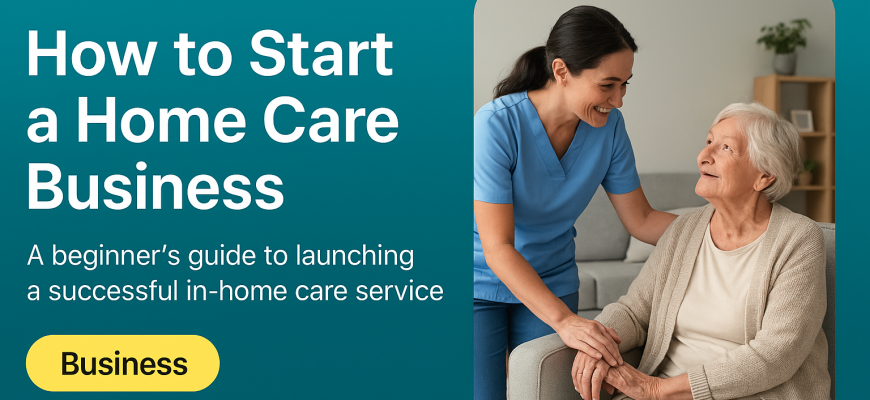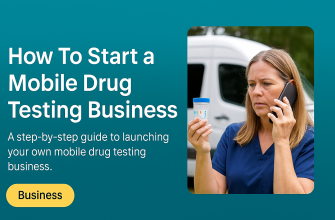Starting your own home care business can be a life-changing and empowering journey. Not only is the demand for in-home care booming – the U.S. home care industry is already worth over $130 billion and growing fast – but an aging population means ever-increasing need for compassionate caregivers. A whopping 82% of seniors want to stay in their own homes as they age, fueling demand for non-medical personal assistance services to help them live comfortably. For women entrepreneurs, this presents a golden opportunity to build a meaningful, profitable business that leverages skills many women already practice every day in caring for family and community.
Women are the heart of caregiving, both at home and in business. Between 53% and 68% of family caregivers in the U.S. are women, giving us a strong foundation of empathy, patience, and multi-tasking to draw on. It’s no surprise that many women feel drawn to starting home care businesses, where those natural strengths become professional assets. Better yet, entrepreneurship can offer the flexibility to balance work and family that so many of us crave – in fact, 64% of women business owners say flexibility is a key reason they started their own company. Imagine designing a career on your terms, making a good living and making a difference in people’s lives every single day. As a business coach, I’ve seen countless women turn their compassion into a thriving enterprise, and you can too.
In this post, I’ll walk you through step-by-step how to start a non-medical home care business – from that first spark of an idea to welcoming your first clients. We’ll cover everything from market research and legal paperwork to choosing your business model, getting insured, setting prices, and marketing your services. You’ll also find tips on hiring and keeping great staff (if you decide to grow into an agency), plus advice on maintaining work-life balance so your business enriches your life, not just your clients’. Let’s dive in and turn your vision into an action plan!
- Step 1: Conduct Thorough Market Research
- Step 2: Handle Business Licensing and Permits (U.S. Specific)
- Step 3: Choosing Your Business Model – Solo Caregiver or Agency Builder?
- Step 4: Securing Liability Insurance and Legal Protections
- Step 5: Setting Your Pricing and Rates
- Step 6: Marketing Your Home Care Services
Step 1: Conduct Thorough Market Research
Every successful business starts with knowing the market. Begin by researching your local community and target clientele. For most home care startups, the core market is seniors or adults with disabilities who need help with daily living (and their family members who often arrange care). Look into the demographics of your area – how many seniors live nearby, and are those numbers growing? (In many places, yes – by 2034, older adults will even outnumber children in the U.S..) This data can usually be found through U.S. Census reports or your state Office on Aging. A growing senior population means sustained demand for home care services in the years ahead.
Next, identify your competitors and gaps in the market. How many home care providers (non-medical) already operate in your city or region? What services do they offer, and what do they charge? Try searching online, looking at senior care directories, and even calling a few as if you were a client to ask about offerings. Pay attention to reviews or testimonials – what do clients say these agencies do well, and where do they fall short? Perhaps you’ll find an underserved niche you can fill. For example, maybe there’s a need for caregivers who speak a certain language in your community, or a lack of providers in a fast-growing suburb.
Also, define the scope of services you plan to provide. Non-medical personal assistance can include help with daily activities like meal preparation, light housekeeping, laundry, running errands, transportation to appointments, medication reminders, companionship, and personal care like bathing and dressing. Unlike medical home health care (which involves skilled nursing or therapy), non-medical home care focuses on essential day-to-day assistance delivered by trained aides or companions. Clarifying your service menu will help you target the right customers and ensure you meet any specific requirements (for instance, some states might regulate personal care services like bathing differently than simple companionship). Decide if you will focus on a particular segment – for example, elder care, post-surgery support, or helping disabled adults – or offer general personal assistance for anyone who could use an extra hand at home.
Finally, assess the demand and how you will reach clients. Talk to people in your community – family caregivers, senior center coordinators, healthcare professionals – to get a feel for what kind of help is most needed. Is it respite care for family members? Transportation for elders who can’t drive? Household help for new moms? Gathering these insights will not only validate your business idea but also give you pointers for marketing (because you’ll learn the pain points to speak to). The more you understand your future clients’ needs and the local market landscape, the better you can position your business for success from day one.
Step 2: Handle Business Licensing and Permits (U.S. Specific)
With your market research in hand, the next step is to get all the legal and administrative ducks in a row. This part might not be the most glamorous, but it’s crucial – and you can do it, step by step. Here’s a breakdown of what to take care of:
-
Choose a Business Structure and Name: Decide how you’ll legally organize your business. Many women start with an LLC (Limited Liability Company) for a small service business like home care, because it’s relatively easy to set up and helps protect your personal assets. You could also operate as a sole proprietor or form a corporation – it depends on your situation – but an LLC is a popular choice for the liability protection. Pick a memorable, professional business name (check that it’s not already in use in your state) and register it if required. Once you have a legal entity, you can obtain an Employer Identification Number (EIN) from the IRS (free on the IRS website). You’ll use your EIN on official forms, especially if you hire employees down the road.
-
Business License and Local Permits: Register your business with your state and local authorities. This often means applying for a basic business license from your city or county (sometimes called a tax registration or occupational license). It’s usually a simple form and small fee. If you use your home as an office, check local zoning ordinances or homeowner association rules to ensure a home-based business is allowed (most likely it is, especially since caregiving is done at clients’ homes).
-
Home Care Licensing (State Requirements): Many U.S. states require a special license or certification to operate a non-medical home care agency. This is a critical item to check. Regulations vary state by state: as of now, 28 out of 50 states require a specialized home care license for non-medical agencies. In those states, you typically need to apply through the state health department or aging services department, meet certain standards, and undergo an inspection or approval process. In other states, non-medical home care is less regulated – you might just need your standard business license. Check your state’s rules early so you can budget time (and fees) for any licensing process. A good starting point is to contact your State Department of Health or Department of Human Services; many have online guidelines for home care businesses. You can also use resources like Caregiverlist’s state-by-state license lookup to find out what your state requires. If a license is required, be prepared to submit an application detailing your policies, perhaps proof of caregiver training or background checks, a surety bond (some states require an agency bond of say $10k–$50k to protect clients), and proof of insurance. Yes, it’s paperwork – but once you have that license in hand, you’ll be official!
-
Other Permits and Tax Registrations: Register for state and local taxes (sales tax ID if needed, though home care services are usually not subject to sales tax). If you’re operating under a name different from your personal name and not forming an LLC, you may need to file a DBA (“doing business as”). Also, if you plan to hire employees immediately, you’ll need to set up state employer accounts for withholding taxes and unemployment insurance. Many states make this easy with online business registration portals.
Getting your legal foundation set may seem daunting, but take it step by step. Many states have Small Business Development Centers (SBDCs) or Women’s Business Centers that can guide you through the process. Once this groundwork is laid, you can move forward knowing your business is compliant and built on solid ground – a big relief and an empowering accomplishment in its own right!
Step 3: Choosing Your Business Model – Solo Caregiver or Agency Builder?
One of the exciting parts of starting a home care business is deciding what kind of business you want to build. Will you begin as a solo practitioner (doing all the caregiving yourself as a one-woman operation), or do you aim to create an agency with staff from the start? There’s no wrong answer – it depends on your goals, resources, and comfort level. Let’s explore both paths:
-
Solo Business Owner (Solopreneur): Many women start out as the primary (or sole) caregiver in their business. In this model, you will personally provide the services to clients, at least initially. The advantages? It’s simpler to launch, with lower overhead costs and no employees to manage. You have full control over the quality of care and client relationships. Every dollar you earn (after expenses) is yours, and you build a personal reputation. If you’re a nurturing, hands-on person who loves working directly with clients, this can be deeply fulfilling. Financially, a solo home care provider can do well – for example, if you charge around the national average of $27/hour for care, working full-time you could gross on the order of $50,000 per year or more (and many areas have higher rates). On the flip side, your income is limited by the number of hours you personally can work, and it can be physically and emotionally demanding to do all the caregiving alone. Essentially, you are both the business owner and the frontline staff. Many solo home care entrepreneurs start this way to learn the ropes and prove the concept, then later decide to expand.
-
Agency with a Team of Caregivers: If your vision is bigger, you might plan to build a staffed agency, hiring caregivers or personal care aides to serve multiple clients simultaneously. This approach can scale your business beyond what one person can do. With an agency model, your role shifts more to management – recruiting and training caregivers, coordinating client care, and handling operations – while your employees deliver the day-to-day care. The potential reward is higher overall revenue and a broader impact: with a team, you can help many more families and increase profits by leveraging others’ time. Many thriving home care agencies start with just a handful of aides and grow to dozens of employees. However, running an agency comes with new challenges: you’ll have payroll to meet, schedules to fill, and the responsibility of being an employer. In home care, hiring and retaining good caregivers can be challenging – there’s a well-known caregiver shortage in many areas – so it requires strong recruiting efforts and a commitment to keeping your team happy (more on that soon). Additionally, your state’s licensing requirements may be more involved for an agency (for instance, requiring a Registered Nurse supervisor or additional accreditation if you provide certain personal care tasks). Despite these challenges, building an agency can be incredibly rewarding. You get to lead a team of compassionate people, amplify your impact, and potentially earn more. Many women find joy in providing jobs to other caregivers and creating a positive work environment aligned with their values.
Tip: You don’t have to choose one path forever. You could start solo and later hire employees as demand grows. Or, if you’re aiming big but want to test the waters, maybe begin by hiring one part-time helper while still doing some care yourself – easing into the agency role. The key is to be clear on your vision. If you know ultimately you want an agency, begin laying the groundwork early (e.g. set up the business and branding with a broad, agency-sounding name rather than just your own name, create basic training materials, etc.). If you prefer to remain a solo care provider, that’s perfectly valid too – just focus on quality and personal branding to stand out, and perhaps plan how you’ll handle time off (maybe networking with fellow independent caregivers to cross-cover when one of you is unavailable).
No matter which model you choose, own it proudly. You are building something that fits your life and goals. One beauty of entrepreneurship is that you get to decide what success looks like – whether it’s a cozy one-woman operation serving a few clients deeply, or a growing agency making a mark across your region.
Step 4: Securing Liability Insurance and Legal Protections
Providing care in someone’s home is a very personal service – and while it’s rewarding, you need to protect your business and clients from the “what ifs.” This is where insurance and related protections come in. It might not be the most exciting part of entrepreneurship, but it is absolutely essential to get right. Here’s what to consider:
-
Liability Insurance: At minimum, you will want a General Liability insurance policy for your business. This covers accidents or property damage that could occur in the course of your work. For example, if you (or an employee) accidentally break a client’s lamp, or a client trips over something and blames your service, general liability insurance helps cover those claims. Many insurance carriers offer policies tailored for home care providers, often quite affordable (small home care businesses might pay around ~$50/month for basic coverage, depending on coverage limits). In addition, consider Professional Liability insurance (also known as “malpractice” or “errors & omissions” insurance). Non-medical care is not as high-risk as medical nursing, but you are still responsible for clients’ well-being. Professional liability coverage protects you if a client claims negligence or inadequate care. Some insurers offer a combined package for home care businesses that includes both general and professional liability.
-
Bonding: You’ve probably seen home care companies advertise that they are “licensed, bonded, and insured.” A bond (specifically a surety bond) is a type of insurance-like guarantee, often required by state regulators, that can reimburse clients in cases of theft or fraud. Essentially, it builds trust that if a caregiver were to do something dishonest like steal from a client, the client could recover losses via the bond. Not all states mandate a bond for non-medical home care, but even if not required, being bonded can reassure potential clients. Bond amounts for home care agencies are usually a few thousand dollars (e.g. $10k or $50k) and the cost to you is a small percentage of that annually. Check your state licensing rules to see if a bond is needed. If so, you’ll obtain one through a surety company or insurance broker.
-
Workers’ Compensation Insurance: If you hire employees (even one part-time aide), workers’ comp insurance is usually legally required. This insurance covers medical bills or lost wages if an employee gets injured or sick due to their job. Caregiving can involve physical tasks like lifting clients, so you want your workers protected – and most states mandate coverage as soon as you have a certain number of employees (often 1 in many states, or 3-4 in some). Don’t skip this; penalties for not carrying required workers’ comp can be steep, and more importantly, your caregiver(s) deserve protection. Talk to your insurance agent about adding a workers’ comp policy when you’re ready to hire.
-
Automobile Insurance: If you or employees will be driving clients in a car (to appointments, errands, etc.), make sure you have appropriate auto insurance. You may need a commercial auto policy or a rider on your personal auto insurance for business use. Check with your insurer; the goal is to ensure any auto accident while on duty is properly covered. If caregivers drive their own cars, you might require them to carry adequate insurance and list your agency as additionally insured.
-
Miscellaneous: Other protections to consider include client contracts and waivers (have a well-drafted service agreement that clients sign, outlining the scope of your services and limitations), and possibly legal consultation for any regulatory concerns. If you maintain client health information, even basic notes, be mindful of privacy laws (like HIPAA) – use secure methods to store sensitive data. Cyber liability insurance is an emerging consideration if you store client data digitally, though for a small operation it might not be critical initially.
The bottom line is, investing in insurance and legal safeguards is investing in peace of mind. It protects the dream you’re building. With the right coverage in place, you can go about your work confidently, knowing you’re prepared for the unexpected. Many clients will also ask or take comfort knowing you are insured and bonded – it signals professionalism. This step might involve calling a few insurance companies or using a broker to compare quotes. Don’t hesitate to ask questions; a good agent will explain exactly what coverage you need for your particular business setup. Once this is sorted, you can focus on caregiving, not worrying “what if something goes wrong?” – because you’ll have it covered.
Step 5: Setting Your Pricing and Rates
Figuring out how much to charge for your services is a crucial piece of the business puzzle. It affects your profitability, your competitiveness, and even how clients perceive your value. Pricing can feel tricky – you might be asking, “What’s the right rate for my services?” The answer will depend on your local market, your expenses, and the level of service you provide. Here’s how to approach it:
-
Research Local Rates: Start by finding out the going rates for non-medical home care in your area. Home care is often billed hourly, though some services might offer daily or weekly package rates. Call a few competitor agencies or look for surveys of home care costs in your state. For reference, the national median rate for non-medical home care is around $30–$33 per hour as of 2023, but it varies widely. In some rural areas it might be in the low $20s/hour, whereas in major cities it could be $40/hour or more. Take note of any differentials: do agencies charge more for 24-hour shifts or very short visits? Is there a minimum number of hours per visit? Use this intel as a baseline.
-
Calculate Your Costs: Next, understand your cost structure so you ensure your price covers expenses and desired income. If you’re solo, your “salary” will come out of what clients pay, but remember to factor in self-employment taxes, insurance, gas for driving to clients, supplies, etc. If you have employees, your biggest cost will be caregiver wages. For example, if market rates to clients are $30/hour, you might pay a caregiver perhaps $15–$20 of that and use the rest for payroll taxes, overhead, and profit. Also account for time spent on non-billable work (assessment visits, admin tasks). One useful exercise is to set a target annual income for yourself (say you aim to pay yourself $X per year), estimate all your yearly business expenses, add those together, and then divide by the number of billable hours you expect to work/provide in a year. This will give you a minimum hourly rate you need to charge to meet your goals.
-
Value Proposition: Consider your value proposition when pricing. If you are offering premium, boutique-level service (maybe highly personalized care plans, or you have specialized training, etc.), you might position yourself at the higher end of the price range. If you’re new and trying to break into the market, you could start slightly lower to attract your first clients – but be careful not to undervalue yourself. Women especially sometimes feel tempted to charge too little; remember, your time and expertise are valuable. It’s perfectly fine to charge what the service is worth and what the market can bear. Clients ultimately are paying for trust and peace of mind, not just the hours.
-
Pricing Structure: Decide on your pricing structure and policies. Will you charge hourly only, or offer discounted daily rates for longer shifts (e.g. a flat rate for a 24-hour live-in day)? Will you have a minimum visit length (common minimum is 2-3 hours per visit)? How will billing work – weekly, biweekly, or monthly invoices? Will you require a deposit or retainer (some agencies bill one week in advance)? Also plan for cancellations or no-shows – outline a policy (for example, 24 hours notice required or a fee is charged). Having these details worked out will make you look more professional when discussing with clients. Put your rates and policies in writing as part of your client agreement.
-
Adjust as Needed: Pricing is not set in stone. You can adjust over time as you gain experience or as demand changes. Perhaps start modestly to build clientele, then you might raise rates annually or for new clients once you have a solid reputation. Always communicate clearly with clients about any rate changes well in advance. Most will understand that costs rise over time, especially if you’ve been delivering excellent service.
One more tip: Don’t be afraid to charge for what you’re worth. If you provide reliable, compassionate care, you are offering something incredibly valuable – enabling people to remain safe and happy at home. Clients and their families are often willing to pay a fair rate for someone they trust. By pricing sustainably, you ensure your business can continue to serve people for the long run (and you avoid burnout that can come from underpricing and overworking). Remember, a successful business is one that profits – which is not a dirty word! Profit means you’re sustainable and can impact more lives. So set those rates with confidence, knowing that everyone wins when you build a healthy, thriving business.
Step 6: Marketing Your Home Care Services
Now it’s time to spread the word and attract clients. Marketing a home care business might feel unfamiliar, but it boils down to this: reach the people who need your help (or their family decision-makers) and build trust. Many women entrepreneurs excel at the relationship-building aspect of marketing – and that’s a huge asset in the home care industry, which runs on trust and personal connection. Let’s break down marketing into a few key areas:
1. Brand and Online Presence: Start by establishing a professional brand identity and presence that makes you credible and visible. This includes creating a business logo and name (if you haven’t already), and importantly, setting up a basic website. Your website can be simple – a clean, one-page or few-page site that explains your services, your background, and contact information is enough to start. Make sure it’s mobile-friendly (many adult children searching for care for mom or dad will look on their phones). Also set up a Google Business Profile (formerly Google My Business) for your company – this is free and hugely important for local search. It allows your business to show up on Google Maps and local search results when someone searches “home care [your city]”. Include your service area, hours, and a few pictures or a logo. Encourage early clients to leave you a Google review – positive reviews will boost your credibility quickly. Additionally, create social media pages (Facebook is especially useful for local services targeting families; you can also use LinkedIn to network with healthcare professionals). You don’t have to be active on every platform, but having an up-to-date Facebook page with your contact info and some posts about caregiving tips or your services can help people find and trust you.
2. Local Networking and Referrals: A lot of home care client leads come from referrals and word-of-mouth. Tap into your local community networks. Let friends, family, and acquaintances know about your new business – you never know who might know someone in need. Build relationships with referral sources like hospitals, discharge planners, doctors’ offices, senior centers, assisted living communities, and churches. Introduce yourself, drop off brochures or business cards, and explain how your services can help their patients or members. Often when an elderly patient is released from a hospital, the social worker may hand them a list of home care agencies – you want to be on that list or at least known to them. Consider also partnering with other professionals who serve seniors, such as geriatric care managers, elder law attorneys, or even hairdressers who have many older clients – anyone who might come into contact with someone who needs help at home.
3. Community Presence: Get involved in your community to raise awareness. Some ideas: attend health fairs, senior expos, or community events and set up a table (bring those flyers and cards!). Volunteer to give a talk or seminar on caregiving tips at a library or community center – positioning you as a knowledgeable, caring expert. These grassroots efforts not only potentially bring in clients but also help you give back and establish goodwill, which is very on-brand for a caregiving business.
4. Marketing Materials: Prepare some simple marketing materials to leave behind with prospects. This could be a one-page flyer or trifold brochure that lists your services, a bit about you/your mission, and contact info. If design isn’t your forte, there are templates online or inexpensive designers who can help. Make sure your materials speak to the needs of your target clients (e.g. emphasizing reliability, compassion, experience, and how you solve their problems like “get respite as we care for your loved one”). Also, have a clear call to action – “Call us for a free consultation” or “Visit our website to learn more,” for example.
5. Online Marketing: Once you have basics covered, consider some online marketing strategies. Running a small targeted Facebook ad or Google ad in your local area can get your name in front of families searching for care. You can set a modest budget and target by zip code, age group (e.g. adults 45+ who may have aging parents), or interests related to caregiving. Also, content marketing can work wonders: perhaps start a blog on your website where you post helpful articles (“Tips for Caring for Aging Parents” or “How to Make a Home Safer for Seniors”). This improves your search engine visibility and establishes trust. Sharing these articles on social media can attract attention too. The key is to offer value and education, not just promotion. By demonstrating your expertise and genuine care for the elderly, you build credibility that draws clients to you.
Let’s highlight a few specific marketing actions you can take right away:
-
Optimize Your Google Listing: Make sure to set up and optimize your Google business listing so local clients can find you easily. This is often the first place families look for home care services.
-
Build Referral Networks: Connect with local hospitals, rehabilitation centers, and senior services to establish a referral network. A handshake and a brochure to a hospital social worker can go a long way.
-
Engage in the Community: Attend senior community events or health fairs armed with business cards and a warm smile. Personal connections often turn into clients.
-
Use Targeted Ads: Consider running small-scale social media ads targeting your city or neighborhood. For example, a Facebook ad that says “Compassionate In-Home Care for Seniors – Call [Your Business] for a Free In-Home Assessment” aimed at adults in your locale can generate inquiries.
Remember, marketing is an ongoing process. Try multiple tactics and see what works best in your area. Track where your inquiries are coming from – if you notice a lot of people find you through a particular senior center or website, invest more effort there. And don’t be discouraged by slow periods at first; it takes time to build momentum. With persistence, your reputation will grow. Nothing beats word-of-mouth from a happy client, so always provide excellent service – it will pay off naturally when they tell others. In home care, you’re not just selling a service, you’re building relationships and trust. Keep that human touch at the forefront of your marketing, and you’ll do great.
In conclusion, starting a home care business is more than just an entrepreneurial venture – it’s a mission of care, a statement of empowerment, and a path to personal growth. You’re stepping into a role that our world truly needs: helping individuals live with dignity and comfort, while also creating a fulfilling career for yourself. There will be challenges, no doubt – regulations to follow, clients to find, and schedules to manage – but remember that every great journey begins with a single step. You’ve already taken that step by exploring this guide and fueling your dream.
As a woman entrepreneur, you bring invaluable strengths to the table: empathy, resilience, creativity, and heart. Trust those strengths. Combine them with solid research, preparation, and the courage to ask for help when needed, and you have a recipe for success. Take it one stage at a time: lay your foundation, build your reputation, grow at your own pace, and take care of yourself along the way.
I truly believe you have what it takes to build a thriving home care business that not only provides you a living, but also enriches your life and your community. There is nothing more inspiring than seeing women create businesses that reflect their values and passions. If caring for others is your passion, then go for it – the opportunity is there and the world needs more compassionate women leaders in this industry.
Your journey starts now. I’m cheering you on every step of the way. Here’s to your success in building a home care business that empowers you and those you serve – a business, and life, filled with purpose, balance, and yes, plenty of heart. Good luck, and keep shining!









